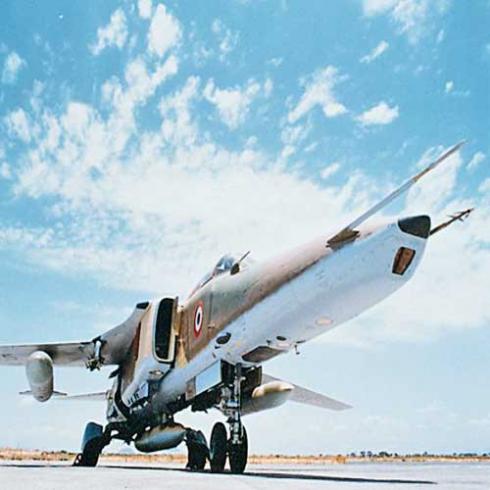IAF’s vulnerable spot
 In 1963, when for the first time two MiG 21s crashed in Ambala, human error and lack of training facilities were held responsible for the accident.
In 1963, when for the first time two MiG 21s crashed in Ambala, human error and lack of training facilities were held responsible for the accident.
When on October 23 this year an MiG 27 crashed at New Jalpaiguri, about 600 km north of Kolkata, the Indian Air Force (IAF) and ministry of defence (MoD) ordered a court of inquiry — a routine practice followed after any mishap.
The MiG, which has become the mainstay of India’s airpower, has also been a cause of worry as it has crashed regularly since the 1960s, around when it was acquired.
Reports by the Comptroller and Auditor General of India (CAG) suggest that the IAF has lost more than 400 MiGs since the aircraft was inducted, apart from trained fighter pilots.
While the MiG-25, an MiG variant, has been phased out, the remaining of the MiGs — MiG-21, MiG-23, MiG-27 and MiG-29 — will continue to remain in service at least for the next 15 years.
“India has no choice but to stay with the MiGs (MiG 21 Bisons, MiG-27 and MiG-29),” said former air vice-marshal Kapil Kak, founding additional director of the Air Power Studies in New Delhi. “Light combat aircraft (LCA) was promised in 1995. Had it been on track, we would not have faced these problems. We are paying the price for wanting to be self-reliant, to produce our own aircraft, with blood,” Kak added.
More than 160 fighter pilots have died flying MiGs — and almost all have been killed during training sorties. This has earned the MiG the description “flying coffin” or “widow maker”.
The government has constituted at least six committees with the one headed by APJ Abdul Kalam, who later became the country’s President, being the first to study aspects of flight safety in the IAF, and provide recommendations to improve the record in that respect.
The report, which has not been made public, analysed 213 accidents between 1977 and 1982, and had recommended advanced jet trainers, a technical training school and an inspectorate directorate, IAF sources say.
While the Committee dealt mainly with training aspects and accidents with special emphasis on accidents related to human error, five other committees were constituted to study the mishaps.
The CAG in its report of 1998 noted that all the recommendations of the Committee headed by Kalam, including the change in training patterns, had been accepted and implemented. The same had been done for other committees, which also studied technical problems and accidents.
The CAG noted that from 1991 to 1997 there were 187 accidents in which the IAF lost 147 fighter jets and 63 pilots. It also stated that the facilities for training pilots in the IAF were far from satisfactory. While the basic trainers were defective and unreliable, trainee pilots had to practise on operational jet fighters in the absence of advanced jet trainers.
The CAG stated that training equipment like flight simulators, computer-based tools and hot shot training aid were either not operational or had not been acquired.
A decade later the CAG in its report 2008-09 said that the IAF could finalise procuring the trainer aircraft in 2004 although there was need for it early as 1982. It further stated that the delay in acquiring these trainer aircraft had impacted pilot training adversely as the aircraft, besides being vital for air safety, was considered essential for improving the skills of IAF pilots.
The ministry of defence in December last year stated that the problem of lack of enough trainer aircraft was mitigated by the increased intensity of supervision by flying instructors. But the CAG audit, however, noticed that 101 of the 259 aircraft lost between 1992 and 2003 met with accidents because of human error.
The crashes have affected the IAF in terms of its squadrons. Of a total sanction of 39 squadrons, the IAF to date operates with just 31. The fast-depleting fleet of the IAF has been a cause of worry because the indigenous light combat aircraft (LCA) is still far from being operational and the multi-million medium multi-role combat aircraft (MMRCA) deal that India vies for has not yet been finalised.